Oklahoma has nearly 500 bird breeds, but many fly south when it gets cold. If you’re a birdwatcher who wants to keep up with the hobby year-round, here are 13 non-migratory birds that spend their winters in Oklahoma.
1. Northern Cardinal

Close-up of
Northern cardinal
mid-flight.
©Thomas Torget/Shutterstock.com
These gorgeously colored birds are easy to spot in the sky or perched on a tree in your backyard. They love black sunflower seeds, so fill up a bird feeder if you want to see northern Cardinals daily. Their bright songs add a dose of good cheer to gray December days.
2. Tufted Titmouse

Tufted titmice live in Oklahoma forests.
©Brian A Wolf/Shutterstock.com
If you know what Northern Cardinals look like, you’ll recognize the tufted titmouse. The breed shares a noticeable crest. Tufted titmice live year-round in woodlands and forests across the state.
3. Downy Woodpecker
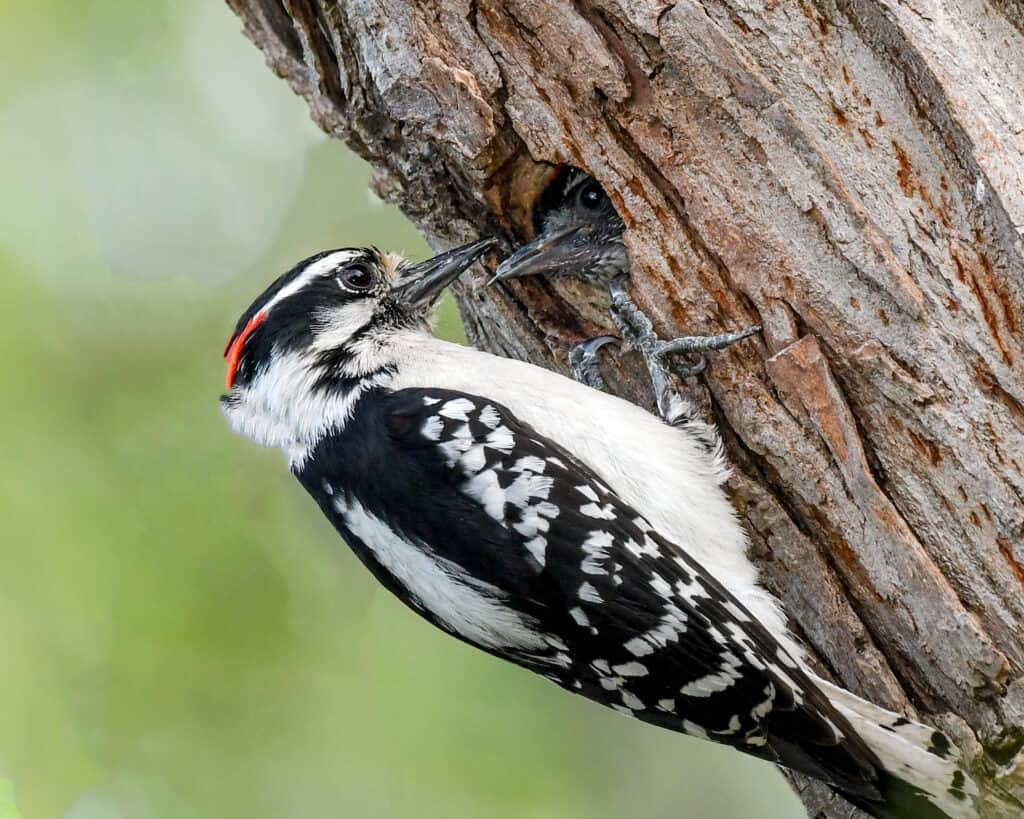
You can often find downy woodpeckers in trees.
©Brent Barnes/Shutterstock.com
Downy woodpeckers are among the most common birds that spend their winters in Oklahoma. You can see these cute little birds everywhere because they thrive in urban and rural settings.
4. White-Breasted Nuthatch

The white-breasted nuthatch has distinctive blue-gray plumage.
©J. A. Mikulich/Shutterstock.com
You might be looking at a white-breasted nuthatch when you spot grayish-blue wings soaring through the air or taking flight. As their name implies, the bluish wings are contrasted with a completely white chest, belly, and throat.
If you live in East Oklahoma, white-breasted nuthatches fly around every month, including in the winter. Western Oklahoma residents can see these birds during cold months.
5. American Crow
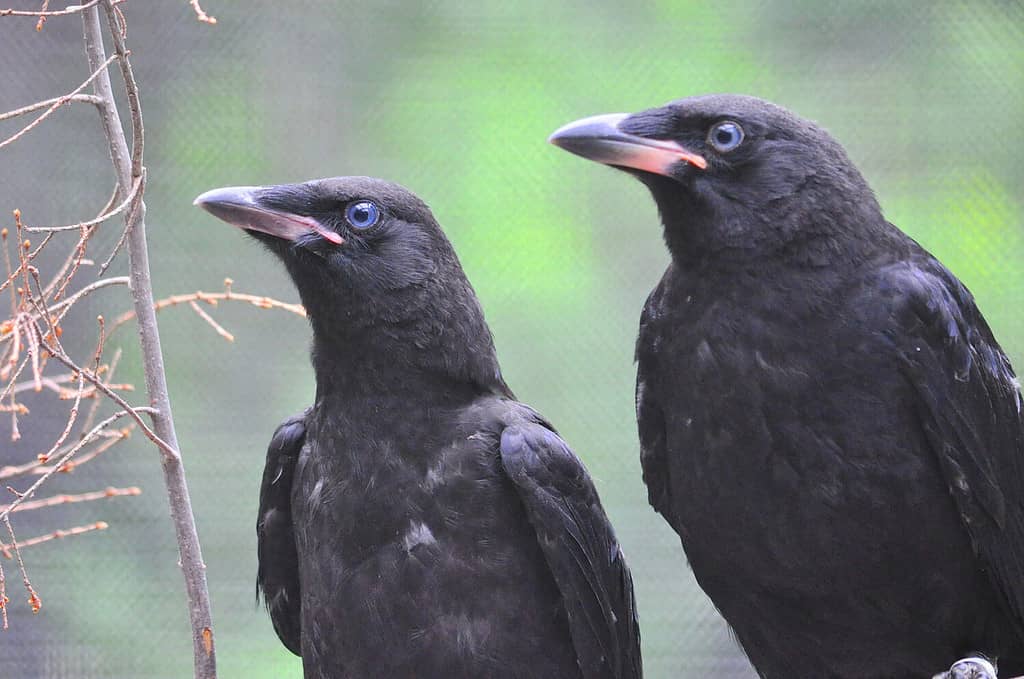
Young American crows with blue eyes perched on a branch.
©Elizabeth Caron/Shutterstock.com
American crows have jet-black plumage and a 33.5-39.5 inch wingspan. Their migratory behavior depends on where they live. American crows nest in Oklahoma stick around when it’s cold and are sometimes joined by American crows from Canada.
In residential areas, you can find these birds in parking lots, foraging the ground for seeds, nuts, insects, and dropped bits of food.
6. Carolina Chickadee
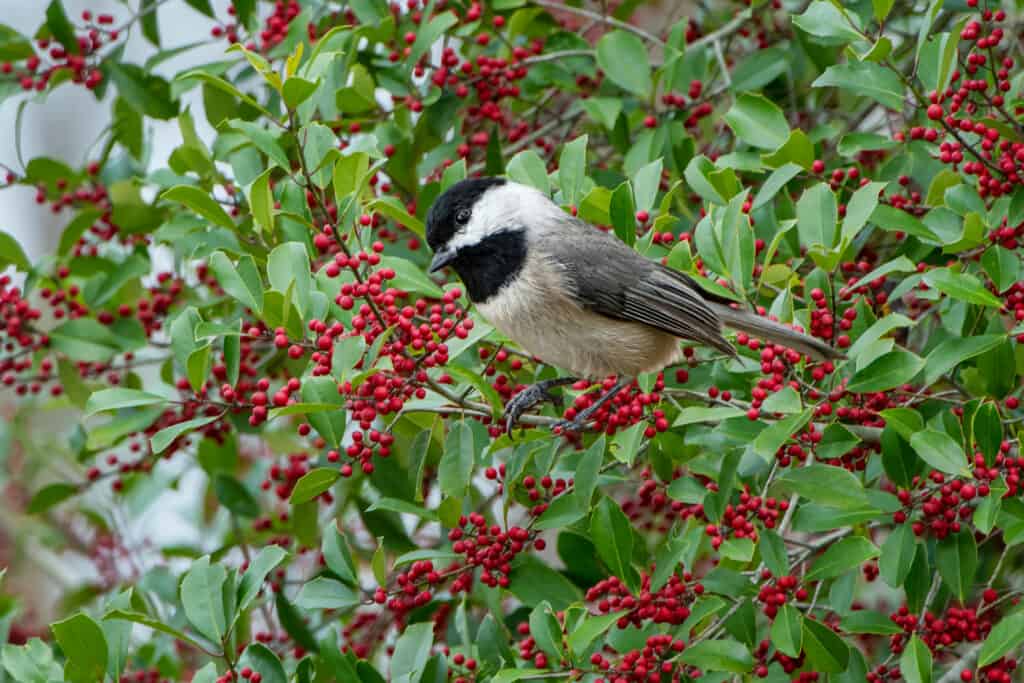
Sometimes, Carolina chickadees fly in mixed-breed flocks.
©Bonnie Taylor Barry/Shutterstock.com
Carolina chickadees are rarely alone. When it’s frigid in Oklahoma, they band together with nuthatches, brown creepers, and other small birds. During warmer months, the chickadees hang out in groups of 2-8.
Birdwatchers can view Carolina chickadees statewide in urban and woodland areas.
7. Carolina Wren

Most Carolina wrens live in the cold eastern part of Oklahoma.
©Steve Byland/Shutterstock.com
Don’t be confused by the Carolina wren and chickadee. They’re about the same size, but the wrens have a ruddy color and large stripes above their eyes. Carolina wrens are also less social. They usually fly solo or with a single partner.
Carolina wrens live in eastern Oklahoma all year. They could be in your yard if you have mature trees or shrubs on the property.
8. Red-Tailed Hawk

Adult red-tailed hawks have distinctive tails.
©ranchorunner/Shutterstock.com
Resident red-tailed hawks never leave Oklahoma. They are the most common hawks in the state. Search the skies for a broad wingspan and russet tail, and you could get lucky.
However, they’re often confused with other ruddy hawks.
9. Red-Shouldered Hawk
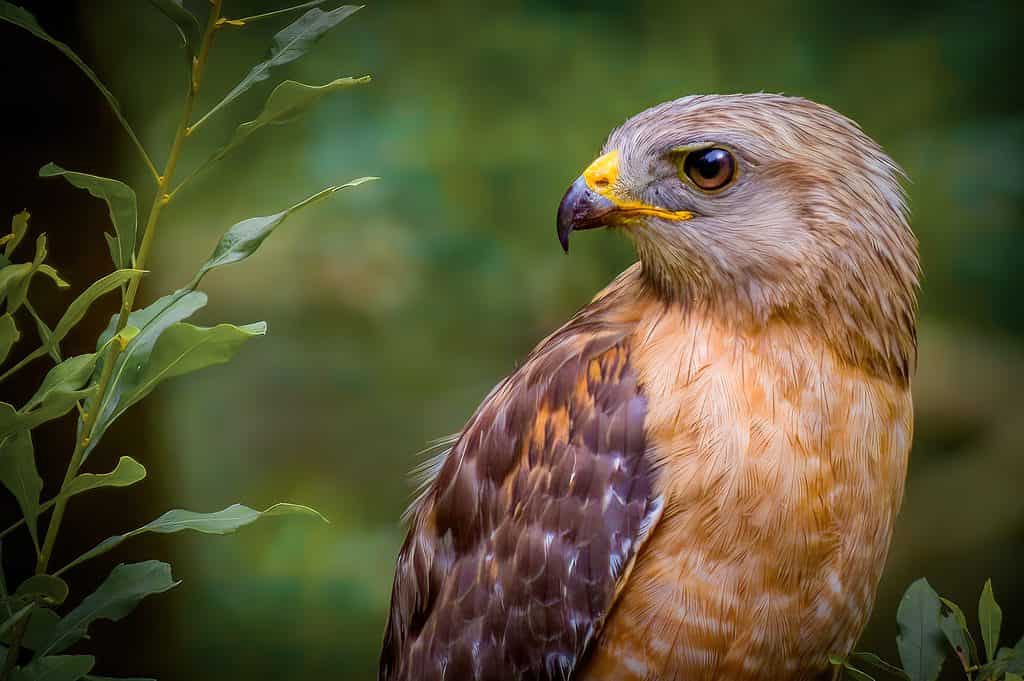
Side view of a red-shouldered hawk.
©Casey Ray Photography/Shutterstock.com
Speaking of rust-colored birds, red-shouldered hawks are identifiable by their relatively small size. The predators like to fly along rivers and zoom through trees.
If you want to snap a picture, your best option is to head to eastern Oklahoma and look for wooded areas. You can go anytime because these hawks stay home all year. If the dusky feathers can’t be seen, listen for the red-shouldered hawk’s distinctive call instead.
10. Cooper’s Hawk
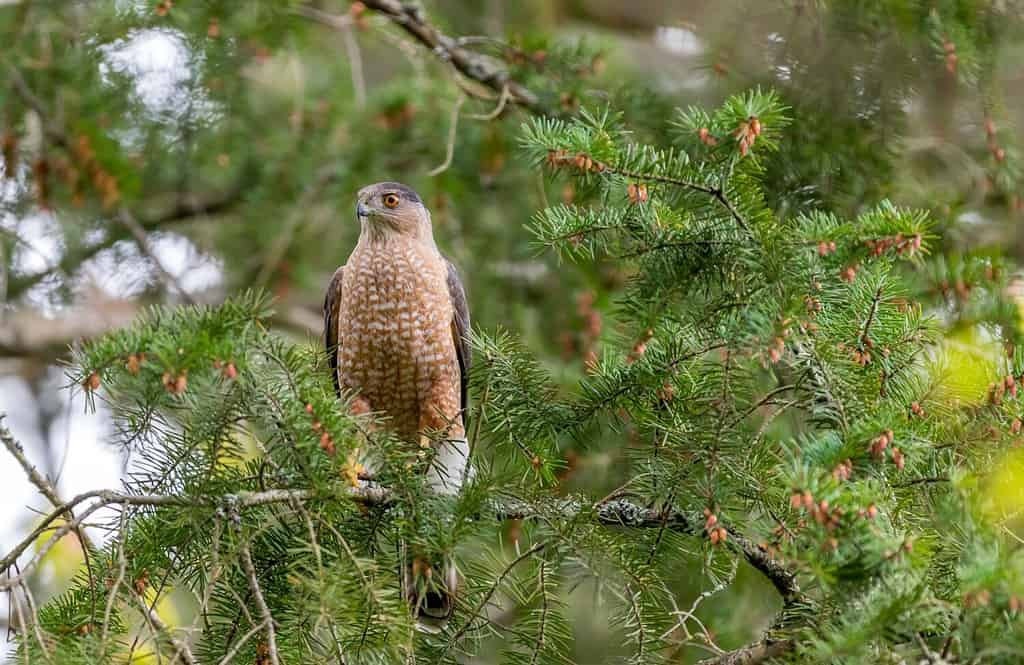
Active
Cooper’s hawks
love to snack on songbirds.
©rhfletcher/Shutterstock.com
Cooper’s hawks feed primarily on smaller birds. On a cold winter day, you can find these hawks soaring through neighborhoods across Oklahoma as they hunt. They look almost identical to sharp-shinned hawks, a breed that migrates to the state in September and stays until May. Cooper’s hawks live in Oklahoma continuously.
11. Hairy Woodpecker
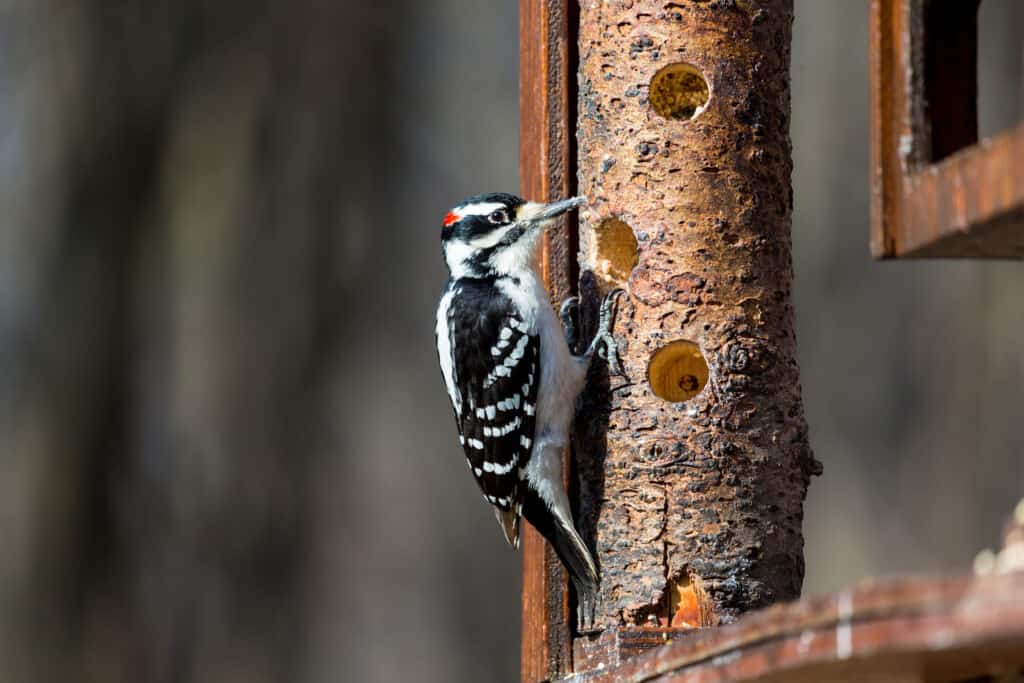
Artificial bird feeders can attract hairy woodpeckers.
©Glass and Nature/Shutterstock.com
As you might expect, hairy woodpeckers enjoy forest environments. They thrive in areas with oak, cottonwood, and pine trees. Although hairy woodpeckers live throughout the state, they can only be seen in dense urban areas in eastern Oklahoma.
Look out for black wings dotted with white and a bill at least as long as its head.
12. Northern Mockingbird
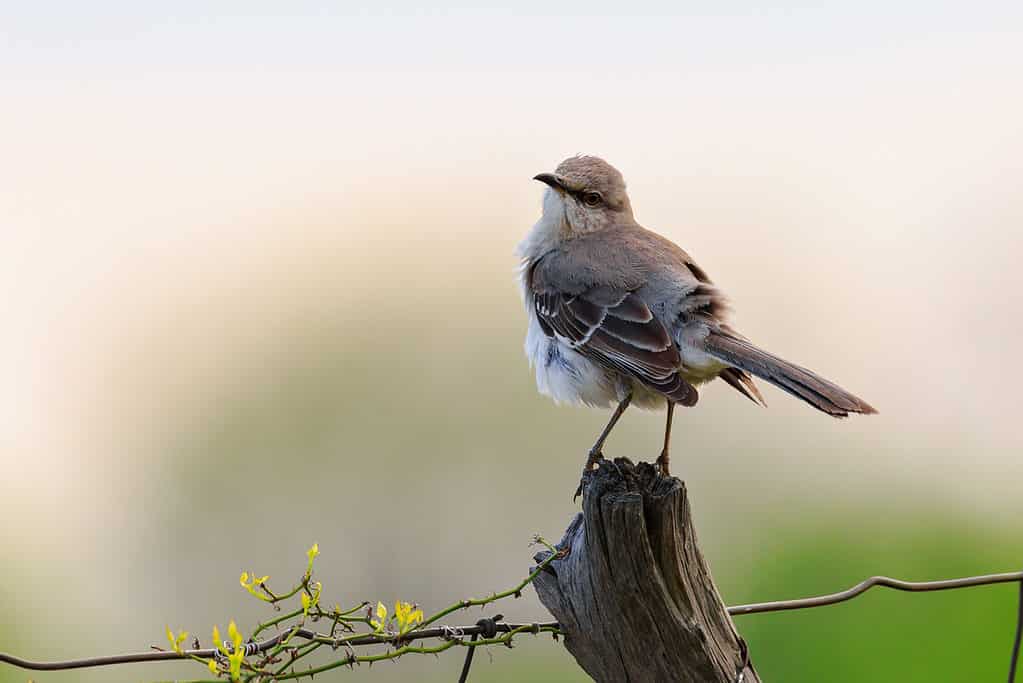
It’s normal to find northern mockingbirds alone.
©iStock.com/cmcneill17
Northern mockingbirds look cute, but they’re extremely territorial. You’ll never see one in a flock; they’re often alone. Northern mockingbirds live everywhere in Oklahoma but become more challenging to find in the northwest part of the state during winter. They’ve adapted to urban living and are easy to spot in large cities.
13. House Finch
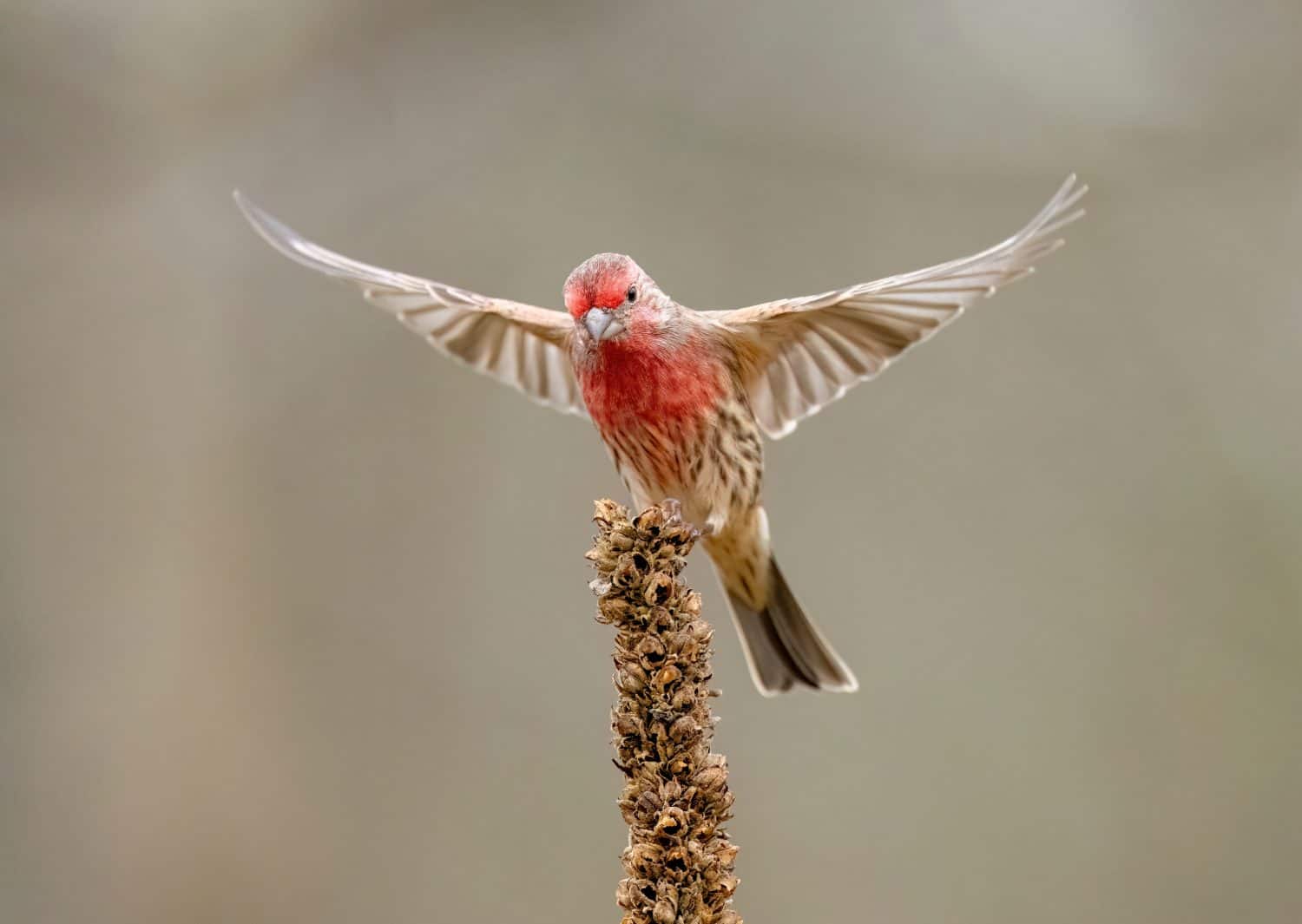
Records show that house finches became common in Oklahoma around 40 years ago.
©Jeff Caverly/Shutterstock.com
House finches haven’t always lived throughout Oklahoma. Researchers believe they came to the state in 1919 and didn’t reach the center until the 1980s. Now, house finches live in urban environments, towns, and farmlands. They’re quite small, although the males are noticeable due to their cherry-red chests.
If you’d like house finches to visit your yard this winter, try filling your feeder with millet, thistle, or sunflower seeds.
Summary of Birds That Spend Their Winters in Oklahoma
| # | Bird Breed |
|---|---|
| 1 | Northern cardinal |
| 2 | Tufted titmouse |
| 3 | Downy woodpeckers |
| 4 | White-breasted nuthatch |
| 5 | American crow |
| 6 | Carolina chickadee |
| 7 | Carolina wren |
| 8 | Red-tailed hawk |
| 9 | Red-shouldered hawk |
| 10 | Cooper’s hawk |
| 11 | Hairy woodpecker |
| 12 | Northern mockingbird |
| 13 | House finch |
The photo featured at the top of this post is © Bonnie Taylor Barry/Shutterstock.com
Thank you for reading! Have some feedback for us? Contact the AZ Animals editorial team.






